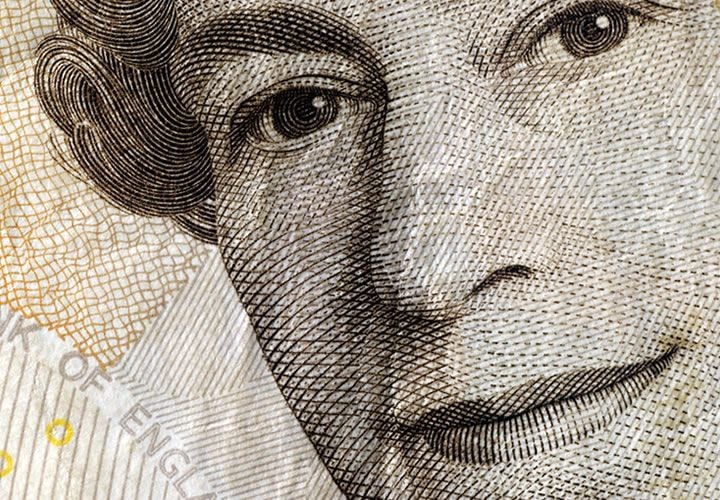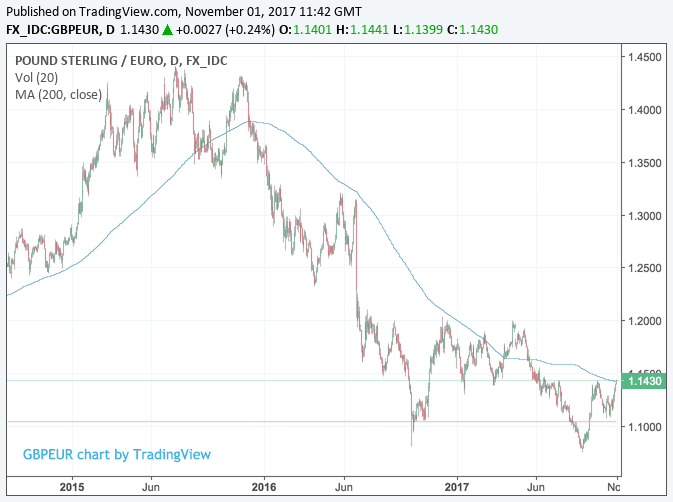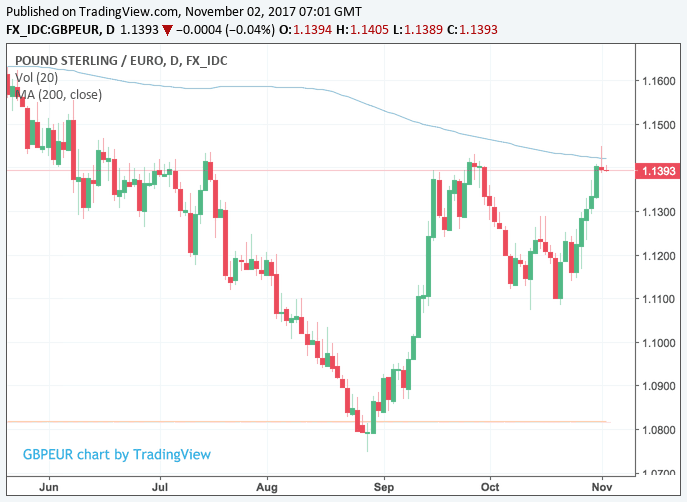The Pound-to-Euro Rate Battles Incredibly Important 200-Day Moving Average

If the Bank of England can trigger the kind of rally that breaks the 200-day moving average in GBP/EUR, the outlook will have adopted a substanitally more positive tone.
An important technical move is underway in the Pound-to-Euro exchange rate; a test of an incredibly important technical resistance point which must be overcome - and maintained - if the outlook for Sterling is to turn positive on a long-term basis.
If we look at the following graph we can see the 200 day moving average and observe Sterling has simply failed to sustain a move above this point since sentiment towards the currency soured in the run-up to the EU referendum.
The 200 day moving average is the average price of Sterling-Euro over the past 200 days and whichever side the exchange rate currently lies on gives an indication of where the long-term trend lies.
If above, then the long-term trend is higher, if below, then the long-term trend is lower. When a cross either above or below the line happens markets take this as a signal that a significant shift in trend is underway.
In terms of Sterling, a move above would signal a longer-term shift into positive territory, perhaps signalling that the great decline inspired by the EU referendum might finally be over.
Crossing such a rubicon does however require a mighty effort, the line therefore forms a key level of resistance that has kept the exchange rate in a downward trend since 2015:
Above: The 200 day moving average (the blue line) will provide fierce resistance to any Sterling advances above 1.1420 versus the Euro.
Prior to 2015 - when Sterling was in an uptrend against the Euro - the exchange rate traded above the 200 day average. Therefore, technical analysts are inclined to believe that a sea-change in Sterling's fortunes is to take place should the level be broken and - importantly - held. (Note the false break earlier in 2017.)
Looking at the value of Sterling ahead of the Bank of England policy event, we can see that the attempted break mid-week failed, confirming to us how important this point is:
Above: The Pound was unable to puncture the 200 day moving average as traders continued to offer Sterling at this level.
We will be watching the Bank of England event to trigger either a break above the line, or confirm that the cap is still in place, in which case a gradual decline can be expected going forward.
Karen Jones, technical analyst with Commerzbank notes the Euro remains under pressure following its recent failure to clear its early October high at £0.9034, which equates to the Pound’s successful defence of the low at €1.1069.
Jones says the 2015-2017 downtrend in the Pound-to-Euro exchange rate has been eroded and the market has been bid towards the 200 day moving average at 1.1419.
The analysts notes the 200-day moving average is part of “a major band” of resistance and “we would allow for it to hold the initial test.”
So in Jones’ opinion, Sterling bulls will have to wait.
Of course, upcoming Brexit negotiations and the Bank of England’s November policy event will provide the fundamental backdrop as to where this technical story evolves - only positive developments here will provide the market with the impetus to crack the ceiling and turn the market into a longer-term uptrend.
"One way or the other, the direction of the EUR/GBP should become a lot clearer by Thursday’s close of play," says Fawad Razaqzada at Forex.com. "Currently, one could make a case for both the bulls and the bears."
Razaqzada says Euro bulls may argue that the longer term trend has been bullish on this pair and with price returning to its 200-day average and key support around the 0.8750 area, "that traders should be on the lookout for new bullish signals to emerge now."
(EUR/GBP at 0.8750 is GBP/EUR at 1.1428. The exact position of the 200 day moving average depends on the data supplier. We see it as being anywhere between 1.1418 and 1.1428).
Get up to 5% more foreign exchange by using a specialist provider by getting closer to the real market rate and avoid the gaping spreads charged by your bank for international payments. Learn more here.






